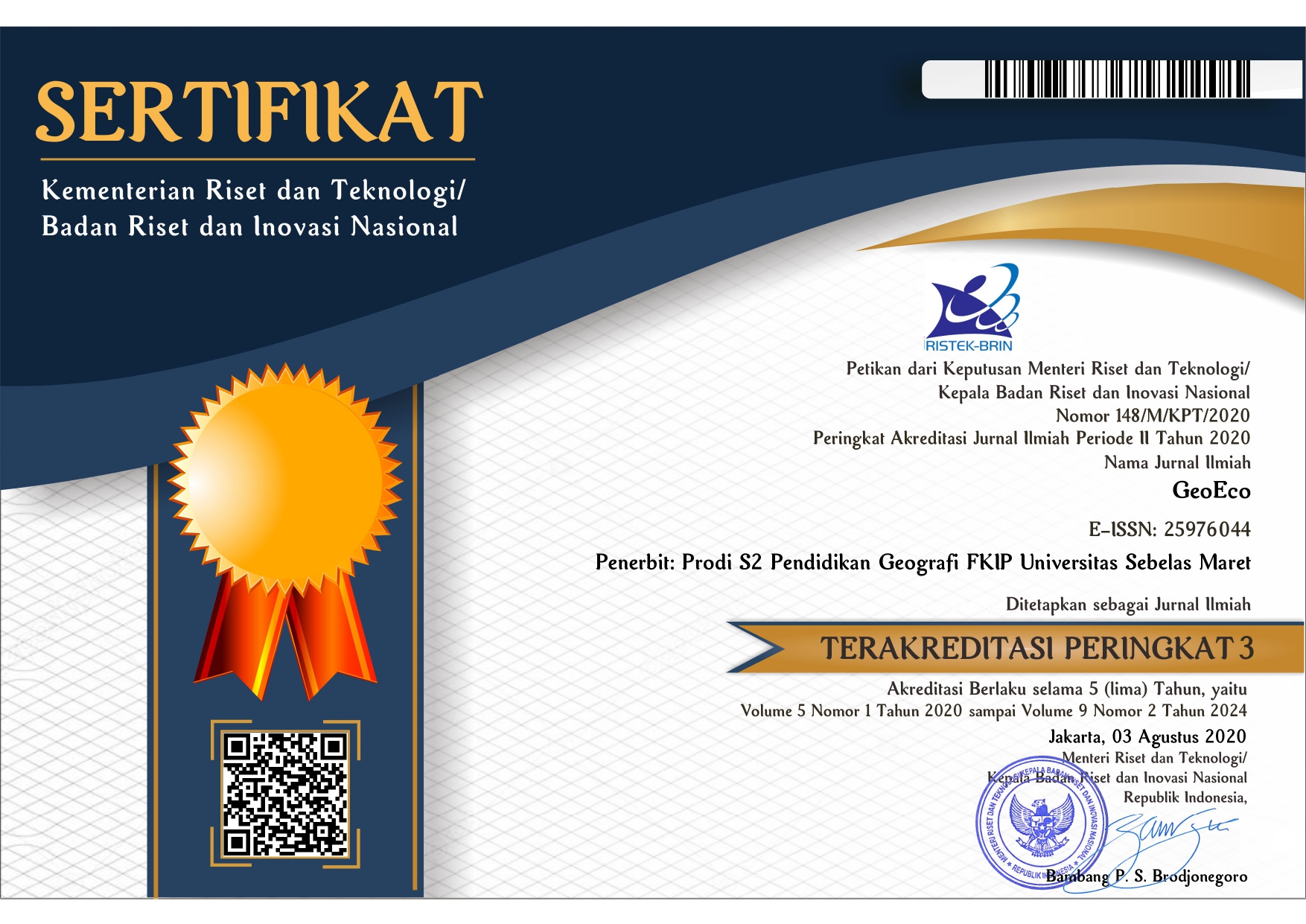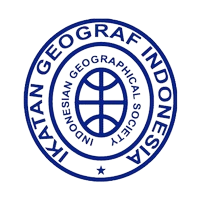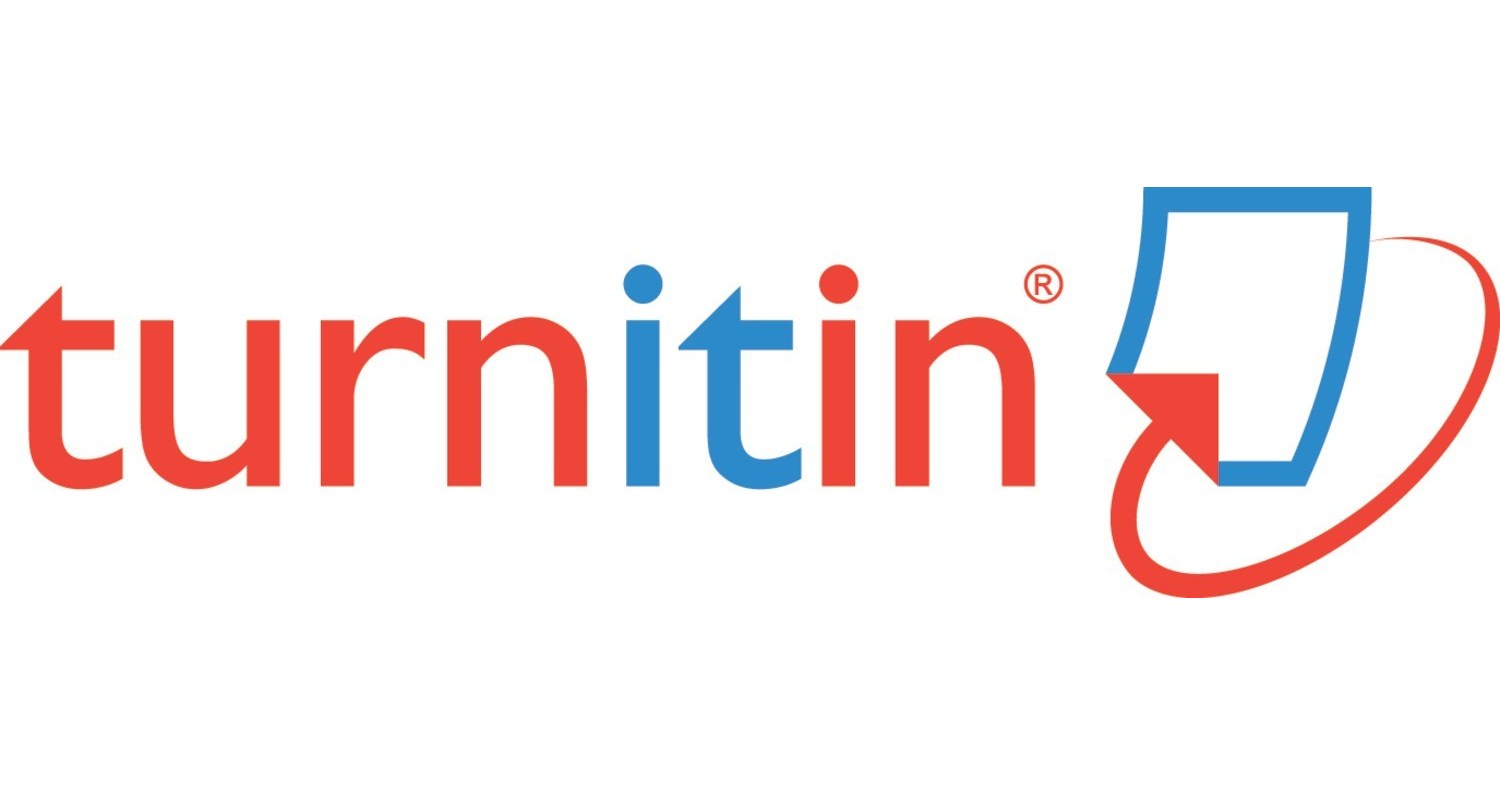DEVELOPMENT OF GEOGRAPHIC BOOKLETS LEARNING MEDIA BASED ON ENVIRONMENTAL CARE ON NATURAL RESOURCES MATERIALS IN SENIOR HIGH SCHOOL
Abstract
The character of caring for the environment is essential for students to be wise in protecting natural resources in Indonesia. The planting of environmental care character values can be inserted into the media used in the learning process. This study aims to develop a geography booklet based on environmental concerns related to students’ daily experiences. The development model in this study uses the Borg & Gall stage, which consists of ten development steps. This research was conducted in three senior high schools in Pangkalpinang, Indonesia. There were (100) respondents, all of whom came from eleventh-grade students. The results of the feasibility test of geographic booklet media products based on environmental care characters obtained an average of 93.33% at the validation stage by a team of experts with very valid criteria. The feasibility of small-scale trials is 83.30%, and large-scale trials are 85.07%. It is known that the results of the analysis of environmental care attitudes obtained before using the product are 63.4%, and after use of 83.8%. It can be indicated that the geography booklet learning media based on environmental care is very feasible to be applied in the classroom and used as a learning resource.
Keywords
Full Text:
PDFReferences
Alirezabeigi, S., Masschelein, J., & Decuypere, M. (2020). Investigating digital doings through breakdowns: a sociomaterial ethnography of a Bring Your Own Device school. Learning, Media and Technology, 45(2), 193–207. https://doi.org/10.1080/17439884.2020.1727501
Arrasyid, R., Setiawan, I., & Sugandi, D. (2019). Developing Learning Media Based on Geographic Information System for Geography Subject in Senior High Schools. Jurnal Pendidikan Ilmu Sosial, 28(1), 1. https://doi.org/10.17509/jpis.v28i1.12163
Desfandi, M. (2015). Mewujudkan Masyarakat Berkarakter Peduli Lingkungan Melalui Program Adiwiyata. SOSIO DIDAKTIKA: Social Science Education Journal, 2(1), 31–37. https://doi.org/10.15408/sd.v2i1.1661
Fatchan, A., Amirudin, A., & Utaya, S. (2012). Effect of Learning Task Group Based on Field Survey (Outdoor Study) for Scientific Writing Ability and Student Results. Journal of Education, 18–35.
Gall, M., Gall, J., & Borg, W. (2007). Educational Research: An Introduction, Seventh Edition (p. 656). Longman.
Gayatri, T., Soegiyanto, H., & Rintayati, P. (2018). Development of Contextual Teaching Learning-Based Audio Visual Adobe Flash Media to Improve Critical Thinking Ability of Geography Learning at Senior High School. IOP Conference Series: Earth and Environmental Science, 145(1). https://doi.org/10.1088/1755-1315/145/1/012004
Hussaini, Y. J., Maxwell, A. F., & Zagi, D. J. (2021). Accessibility of Electronic Media for Learning Geography in a College of Education in Bauchi State , Nigeria. 7(4), 1–10.
Jaya, I. M., Sadia, I. W., & Arnyana, I. B. P. (2014). Pengembangan Perangkat Pembelajaran Biologi Bermuatan Pendidikan Karakter Dengan Setting Guided Inquiry Untuk Meningkatkan Karakter dan Hasil Belajar Siswa SMP. E-Journal Program Pascasarjana Universitas Pendidikan Ganesha Program Studi IPA, 4, 1–12.
Kamil, P. A., Utaya, S., Sumarmi, & Utomo, D. H. (2020). Improving disaster knowledge within high school students through geographic literacy. International Journal of Disaster Risk Reduction, 43(November 2019), 101411. https://doi.org/10.1016/j.ijdrr.2019.101411
Kemdiknas. (2011). Panduan Pelaksanaan Pendidikan Karakter. Kementerian Pendidikan Nasional.
Mangal, S. K., & Mangal, U. (2008). Essentials of Educational Technology. PHI Learning Private Limited.
McPhee, S. R. (2021). Advocating for blended pedagogy as a shift to more holistic inclusive geography. Journal of Geography in Higher Education, 00(00), 1–12. https://doi.org/10.1080/03098265.2021.1957802
Norsidi, N., & Sariani, N. (2021). Implementation of Character Education Towards a School of Culture and Environmental Care (ADIWIYATA). GeoEco, 8(1), 25–34.
Ozsoy, S., Ertepinar, H., & Saglam, N. (2012). Can eco-schools improve elementary school students’ environmental literacy levels? Asia-Pacific Forum on Science Learning and Teaching, 13(2), 1–25.
Purwanto, E., Fatchan, A., -, P., & Soekamto, H. (2015). Development of Geography Text Books Used by Senior High School Teachers Case Study at East Java-Indonesia. Journal of Education and Learning, 5(1), 60. https://doi.org/10.5539/jel.v5n1p60
Rafiei, N., & Davari, F. (2015). The Role of Human Resources Management on Enhancing the Teaching Skills of Faculty Members. Materia Socio Medica, 27(1), 35. https://doi.org/10.5455/msm.2014.27.35-38
Rickles, P., Ellul, C., & Haklay, M. (2017). A suggested framework and guidelines for learning GIS in interdisciplinary research. Geo: Geography and Environment, 4(2). https://doi.org/10.1002/geo2.46
Sugiyono. (2016). Metode Penelitian Kuantitatif, Kualitatif dan R&D. Alfabeta.
Wibowo, N. A., Sarwono, S., & Yusup, Y. (2021). Environmental Care Attitude of the Students in Senior High School at Pati Regency. GeoEco, 7(2).
Refbacks
- There are currently no refbacks.












.png)

